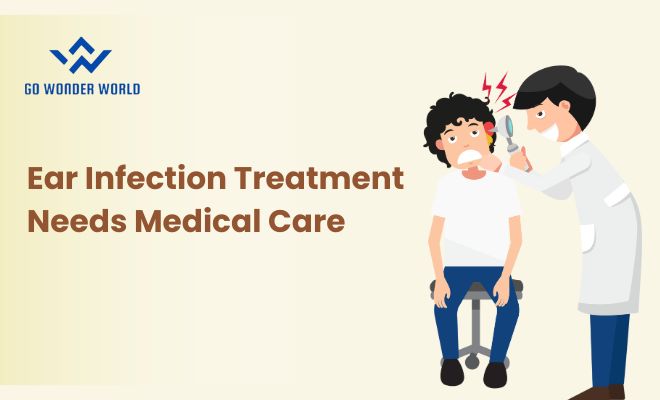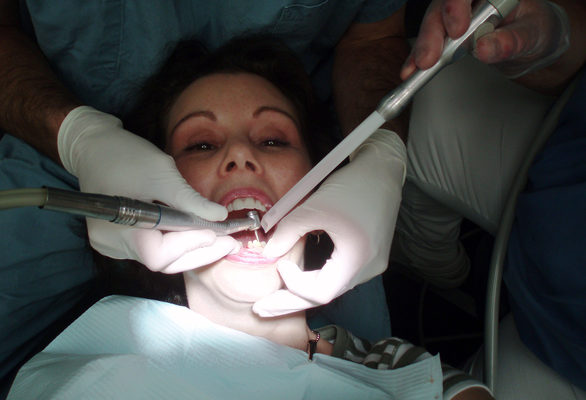Ear Infection Therapy Requires Medical Attention

Eardrums are never fun. Of all the reasons that young children visit a medical practitioner at an urgent care center Los Angeles, one of the most popular is to acquire a pony.
In general, most ear infections aren’t too dangerous, and often go away on their own in a few days. If you’re comfortable at home, you can easily control your pain and discomfort as you wait out the treatment. In certain cases, medical treatment may be required if symptoms worsen or persist.
Are Ear Infections Caused By Anything?
A frequent paediatric disease, especially for those aged between 3 months and 3 years, is an acute otitis media. When an ear infection is caused by bacteria and viruses, it frequently follows a respiratory illness, such a cold. Once it gets to the middle ear via the eustachian tube, which connects the middle ear to the back of the throat, the infection or bacteria will obstruct the tube, causing it to become blocked. The fluid builds up in the middle ear as there is no convenient way to leave. The fluid that has been trapped in the wrong place may get infected and cause discomfort.
Due to the decreased slope of the eustachian tubes in children, ear infections are more common in them. Because of this, it will be simpler to block the drains and more difficult to unblock them.
There are other diseases that might damage the ears as well. Infection is rare in otitis media with effusion. However, it can lead to hearing difficulties. Swimmer’s ear, commonly known as otitis externa, is an infection of the outer ear canal.
Symptoms of ear infection include an itchy, watery, or painful ear may include the following:
- Severe earache when laying down
- Fever
- More weeping or fussiness than normal
- Poking at an ear
- Not getting enough rest”
- Swallowing makes one lose appetite
- Hearing or reacting to noises was difficult
- Headache
- Disturbance of the equilibrium
- Treatment of a build-up of fluid in the ear
- Tinnitus is a common sign of ear infection in adults.
- Itchiness in the ear
- Treatment of a build-up of fluid in the ear
- noise-induced hearing loss
Is There Anything I Can Do To Treat An Ear Infection At Home?
For minor symptoms, effective home treatments that are safe to use are available. Soothe the affected area with warm or cold compresses. Let both try in order to find out which one works better. Wrap a wet washcloth over the ear that is producing pain, then wring it out and lay it on top of the ear. Instead of an ice pack, place a towel-wrapped ice pack on top of the skin before application. You’ll want to choose a heating pad and adjust the temperature on the dial to the level of warmth, not to the level of heat.
Max out your OTC painkillers. Use acetaminophen (Tylenol), ibuprofen (Advil), or naproxen to temper the discomfort of earache (Aleve).
Achieve an elevated sleep posture. If it feels better, use cushions to help promote fluid in the ear so that the fluid may drain out. An over-the-counter pain medication such as acetaminophen can help with discomfort for a short time, but to prevent misuse, it is recommended that you speak with a medical professional first. Garlic, tea tree, and olive oil are also quite helpful. Never apply drops to an ear with a rip or hole in it.
What is the Estimated Wait Period Before Taking the Medical Help?
Generally, ear infection symptoms should resolve in two to three days. In other cases, though, an ear infection is a medical concern.
local Indigo Urgent Care for you or your kid if you or your child have any of the following:
- A temperature of 102.2 degrees or greater
- Ear fluid, discharge, or pus
- Caused by the swelling or tightness of the tissue behind or under the ear.
- Moving your face might be difficult.
- Instantaneous disappearance of severe pain A burst eardrum.
- Lack of vigour or energy
Dizziness that lasts for an extended period of time, problems with one’s balance, or severe headaches.
Symptoms That Worsen Or Continue For More Than Two To Three Days.
A kid under the age of two is considerably more susceptible to ear infections. An infant under 6 months old who is showing indications of ear discomfort (fretful screaming, attempts to pull their ears) should seek medical attention immediately.
Infections of the Ears May Be Associated With COVID-19.
While ear infections are not commonly caused by COVID-19, they are a potential side effect. Although this symptom may occur if COVID-19 is detected, if it is also accompanied by signs of respiratory distress (cough, fever, shortness of breath) or other markers of COVID-19, it is recommended that a medical test be performed as soon as possible. Prior to attending a hospital, medical clinic, or urgent care centre, please call to confirm the condition. Indigo’s testing possibilities can be investigated further.
You can take an online risk assessment or an in-person visit with an Indigo Online Care provider to find out whether you need to be sent to a testing centre, or learn more about the Coronavirus Assessment Tool.










